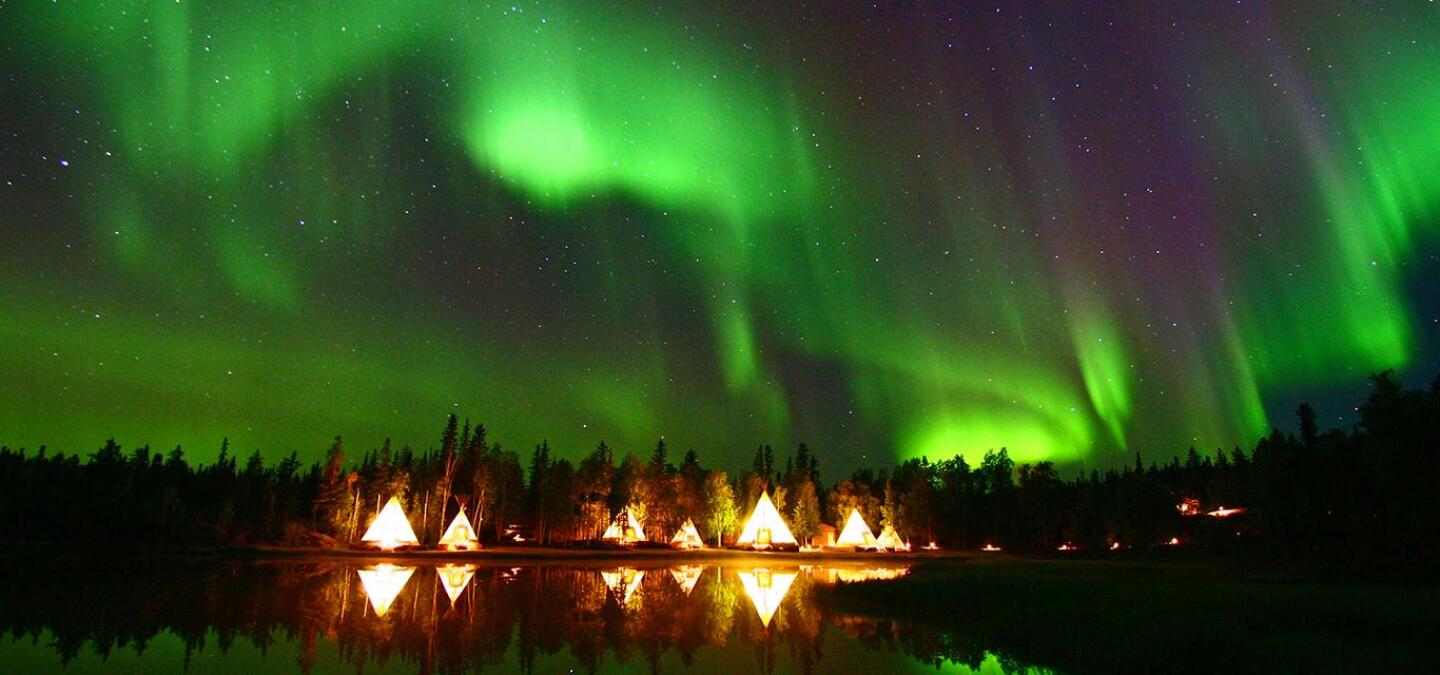You’ve likely heard the phrase “transformative travel,” one of the buzzwords of recent years. As people are exhausted from our always connected lives, they are searching for ways to unplug from their devices and reconnect with friends, nature, and, simply, life. Talk to Indigenous tourism operators, however, and you may find them wondering why it has taken the rest of the world so long to catch on. At the heart of many of these experiences is slowing down, and taking the time to connect with the environment, whether that be on a medicine walk in search of healing plants in Alberta or watching the northern lights fill the night sky above the Northwest Territories.
Fundamental, however, to much of transformative travel is another idea—being exposed to concepts and cultures that are unfamiliar, and being open to having your understanding of the world changed in the process. Brenda Holder, a Cree and Métis guide in Alberta, explains what she thinks makes Indigenous tourism experiences different. “You get to see the forest through our eyes,” she explains. “And to value the land as we do. You’ll leave having a different understanding of our culture after having been immersed in it.”

A Dog-Sledding Excursion in the Yukon
For Keith Henry, the president and CEO of the Indigenous Tourism Association of Canada (ITAC), Indigenous tourism is not only important for how it changes the perspectives of individual travelers, but also for the part it can play in the healing of divisions within Canada. “We often talk about reconciliation in Canada,” Henry says. “And this process has to include the country’s Indigenous communities—First Nations, Inuit, and Métis. Indigenous tourism is one of the best ways I know of preserving cultures while introducing them to those who want to learn more about them.”
The increasing interest in Indigenous tourism appears to be having an impact on bookings in various countries around the world, but Canada stands out in terms of its support for Indigenous tourism, in large part thanks to the efforts of ITAC. “We are continuing to build awareness among our partners about how tourism marketing works, and communicating that success requires more than a website and a basic business plan. It is exciting to see partners who are flourishing, but it’s still a struggle for some.”

The Northern Lights Shine Brighter in the Northwest Territories
To help their partners reach interested travelers, ITAC has launched an Indigenous Experience website, profiling travel experiences throughout Canada. Travelers can find inspiration for half-day or full-day adventures, as well as museums and cultural centers they may want to add to their itineraries. Or they can book a package that has been designed to incorporate a number of different sights and activities into a multi-day itinerary.
Wherever you are headed, it’s hard to argue with the logic of Mike Willie, of the Musgamakw Dzawada’enuxw First Nation in British Columbia. He is the owner and operator of Sea Wolf Adventures, which offers wildlife-viewing and cultural tours on Northern Vancouver Island. “When you see a grizzly bear on one of our trips, my grandparents likely knew that bear’s grandparents,” he says. “Who could be a better guide to this part of the world, our home for more than 15,000 years?”











